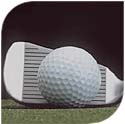|
Educate
yourself on all aspects of club design including lie angle to help make
an informed decision
Buying
new golf clubs is exciting, but it can be confusing. Dozens of companies
offer hundreds of choices, and many players find themselves baffled and
frustrated about what to choose.
Fear not. There is a blueprint
for determining what clubs are best suited to your game and your
game-improvement goals. The vast majority of recreational golfers can
improve their game and enjoyment level simply by changing/upgrading
equipment.
Get fitted
Before buying clubs, participate
in a custom-fitting session. Most custom-fitting professionals charge a
modest fee for the session, $40–$60. It’s well worth the price tag
and equally as advantageous as a golf lesson. If you do buy clubs from
the fitter, the fee is deducted from the purchase price.
During the fitting, you’ll
learn about club components, how they affect your game and what
component specifications are best for you. A good fitting takes 60- 90
minutes, and it’s a real eye-opener for most players.
What's under the hood?
Garnering knowledge of club
components and how each component can affect your game, is also critical
to selecting the right clubs. Here are some basics:
Club length relates to shot
trajectory, distance and accuracy. Length is measured in small
increments. Not all players are best-served by a standard-length club,
and the recent trend by manufacturers is to make clubs longer for added
shot distance.
The longer arch of the swing
produces more clubhead speed, but longer clubs are more difficult to
square at impact. This affects accuracy and consistency. The general
rule is to find the club length that produces good distance coupled with
consistency shots.
- Grip size directly affects
feel and performance. A poorly sized grip can cause a player to grip
the club too tightly, thus tensing arm and neck muscles. This
adversely affects flexibility, fluidity of the swing and the power a
player can generate.
Players who constantly slice
the ball might consider a smaller grip to allow the hands to become
more active so the clubhead squares at impact earlier. The reverse
is true if you hook the ball. Increase grip size. Check out new
grips from Lamkin, Golf Pride and Winn.
- Shaft flex is one of the least
understood specifications and one of the most important. Most
golfers play with shafts that are too stiff while others play shafts
not suited to their game because of the general flex labeling system
(L–ladies, S or A–senior, R–regular, X or S–stiff,
XS–extra stiff) used industrywide. Each label encompasses a broad
range that also varies between companies.
Try a couple of shafts.
You’ll know instantly which is best for you. The right shaft will
produce desired ball flight and allow you to hit good shots more
consistently.
Shaft material also makes a
difference. Steel is generally more consistent than graphite, which
is lighter and can increase clubhead speed for greater distance.
True Temper just introduced the BiMatrix, graphite/steel combo
shafts for woods which offers the playability benefits of both
materials. Dual-material shafts also are available in the new Adams
GT irons.
Lie angle is the angle
between the shaft centerline and the sole of a club in its playing
position. Lie angle, which greatly affects ball flight, is measured
in degrees and is referred to as standard, flat or upright.
Clubs with too flat a lie
angle cause shots that travel to the right. A lie angle that’s too
upright causes shots left of the target. A proper lie angle,
different for each person, allows shots to travel straight. Today,
most clubs are designed with a more upright lie angle because most
people slice the ball.
Test drive
Don’t buy clubs before
trying them out. Most manufacturers, shops and retailers offer demo
clubs or conduct demo days. When you head to the range, don’t just
start slinging golf balls. Focus on making good swings, so you give
the clubs a fair test. And look at all the options: compare brands,
compare different shaft flexes in the same club and test steel
shafts against graphite shafts.
Good Luck!
|

